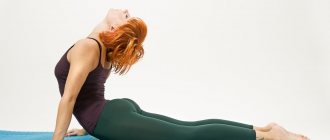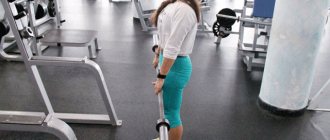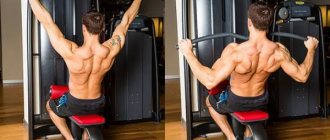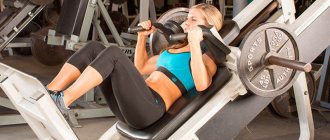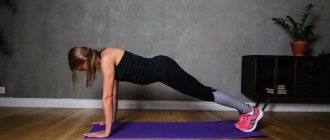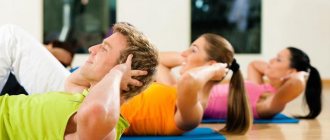Diagnosis of scoliosis
Diagnosing scoliosis itself is not an easy task. It is necessary to undergo a number of procedures to make a correct diagnosis and treatment. For a traumatologist specializing in types of scoliosis, it is not enough to simply examine the patient, even with the help of computer equipment.
To diagnose scoliosis you need:
- orthopedic examination;
- conclusion of a neurologist to exclude nervous diseases;
- accounting of metabolic processes;
- accounting for congenital deformities.
The main method for diagnosing this disease is x-ray . One of the most accurate methods in the world. It allows you to monitor changes in the human spine. This is one of the cheapest, but also harmful ways to study the spine.
The second method after x-rays is photography . It helps evaluate changes in posture. The method is not the most accurate, but it is harmless.
Optical CT (computed tomography) is only suitable for teenagers. A scoliometer is similar in characteristics to a CT scan. MRI (magnetic resonance imaging) and CT do not provide a complete, high-quality picture of the disease, so it is best to undergo an x-ray.
Restoring health according to Dikul
The founder of the system knows firsthand about spinal problems. Valentin Dikul received a serious injury in his youth - a compression fracture of the ridge. Such a disappointing diagnosis leaves patients virtually no chance for a healthy and fulfilling life. But thanks to perseverance and regular training, he was able to overcome the disease. Today, using his method, millions of people are restored to health, independently or in specialized clinics. A variety of exercises are offered aimed at eliminating curvatures, treating intervertebral hernias, osteochondrosis and other pathologies.
The Dikul complex is carried out only under the supervision of a specialist
Several approaches to support back health:
- Lie on your back and place your hands crosswise on your chest. First, the left shoulder turns to one side, then the other. The results are small twists with low amplitude, only on the floor. 10 repetitions will be enough.
- Lying on your stomach, arms extended forward and touching the floor. As you inhale, you need to raise your forelimbs as much as possible. You should pause at the highest point.
- Take a position lying on your back, hands resting on the floor. The hips rotate in different directions in turn, the body maintains one position. When turning, you need to pause a little.
The start of exercise is preceded by a comprehensive diagnosis, which allows the pathology to be accurately determined. During the process, all actions should be calm, aimed at restoring the functioning of the body, so there is no point in grueling exercises. You need to control your breathing and do everything thoughtfully. Exercises with a gymnastic ball are provided for children; they are carried out by specialists under strict supervision.
Specialists help you choose a program and undergo rehabilitation
No ads 3
The effectiveness of physical therapy for scoliosis
Exercise therapy (therapeutic physical education) is the most effective procedure in the treatment of scoliosis, provided that it is carried out regularly, preferably daily. Exercise therapy and means of correcting posture are the most reliable friend in the fight against this disease. For different types of curvature, exercise therapy should be different. So, for scoliotic deformation, sports activity is prescribed, which can be easily performed at home. Its task is to gradually increase physical activity. Exercises for scoliosis at home will not be difficult and will take place in your own environment.
A serious illness is true scoliosis. These are deviations of the ridge to the side, asymmetry of the shoulder blades, curvature of the thoracic region. Careful selection of exercises, the opportunity to continue treatment in a special school, hospital or sanatorium.
What is the effectiveness of exercise therapy?
- There is no need to take pills.
- Exercise therapy (physical therapy) helps restore muscle strength and elasticity.
- The work of the heart and lungs is activated.
- The curvature of the angle of the spine slows down or stops.
- The person feels cheerful.
- Muscle fatigue is relieved.
Physical education is prescribed by the attending orthopedic doctor.
Principles of gymnastics for scoliosis
One of the key types of exercises for spinal scoliosis at home is gymnastics . It involves developing (improves physical development) and special (corrective) exercises. Let's consider the second type in detail. Their task is to form correct posture and correct spinal disorders.
Types of gymnastic exercises:
- standing in front of a mirror;
- maintaining correct posture while standing on a vertical plane;
- working under the guidance of an instructor;
- taking a massage course.
Gymnastics begins with unloading the spine. First, the type of starting position is selected. These are exercises that are performed while lying down. After a while, standing exercises are added.
Exercises for various degrees of scoliosis
Exercises for scoliosis at home are effective for any type of curvature. Excellent results are achieved at the initial stage of vertebral deformation.
What rules do you need to know to improve your back condition?
- In the first stages of spinal deformity, you can still choose exercises on your own, but if the degree of curvature is 3-4, then consultation and prescription of an orthopedist is necessary.
- It all starts with a small load, which then gradually increases.
- If the patient feels discomfort, the exercise should be stopped immediately.
- Regular lessons will lead to improvement.
- Warm-up is a mandatory initial stage of therapeutic physical education.
Qigong
One of the popular techniques borrowed from Chinese alternative medicine, which allows you to quickly restore the health of the ridge, is qigong. It is recommended by specialists (one of the most famous is Dr. V.A. Butrimov) when diagnosing a patient with problems with the musculoskeletal system. Thanks to a well-thought-out technique, a person easily recovers from injuries (fractures, sprains, dislocations), gets rid of back pain, and gets a flexible body. Classes consist of approximately the following exercises:
- Feet parallel, legs no wider than shoulders. The knees bend slightly, the pelvis stretches forward, the arms are lowered along the body. This position is called the starting position, and is taken before each approach.
- Take a deep breath, inhale through the mouth. In the process, the stomach is retracted as much as possible. It should literally stick to your back. As you exhale, the body completely relaxes.
- The head drops down so that the chin touches the chest. The neck muscles should be taut. The position is held for several seconds. After this, it returns to its original position.
Qigong is a holistic system that includes not only physical exercises, but also breathing exercises and meditation. Translated, the name means the flow of energy and movement, that is, working with vitality through physical activity. You can perform the complex even at home, but experts recommend doing everything in nature to achieve better results.
Exercises of Tibetan monks will help strengthen your back
Exercises in the first stage of scoliosis
- Marching for a couple of minutes in one place.
- Raising your toes and arms up.
- Shoulder circular rotations forward and back (20 times).
- Bend forward with arms (10 times).
- Turn the body alternately to the right and left, arms to the sides (10 times each).
- The man lies on his back. Hands up, toes pointing towards you, and stretches out slowly.
- Pull your elbows towards opposite knees. The quantity is the same - 10 doses.
- Alternately pull your knees towards your stomach.
- Bicycle and scissors.
- The situation does not change. The upper part of the body is raised, held for a while, and lowered.
- The same exercise, but a little more complicated - the upper and lower limbs are stretched.
- Position on your stomach - imitation of swimming.
- The situation is the same. The upper body and legs are raised. The two parts close together to form a “basket”.
- It all ends with walking around the room.
Exercises contraindicated at any stage of curvature!
- You cannot hang on the horizontal bar and do pull-ups on it.
- Somersaults are prohibited.
- Do not lift heavy objects (barbells).
- It is forbidden to make fast movements.
- You can't do martial arts.
- Running is also prohibited.
Exercises for a healthy back: lesson three
February 7, 2011
Five exercises performed on all fours: videos and comments.
If you spend the whole day sitting, inactivity and the use of not very comfortable furniture quite quickly lead to the development of chronic pain in the spine. The problem can be solved by increasing physical activity and regularly performing special exercises to maintain a healthy back. The third part of a set of exercises to strengthen the back, which is performed in a position on all fours
, comments Marina Makarova, head of the exercise therapy department of the Center for Restorative Medicine and Rehabilitation of the Treatment and Rehabilitation Center of the Ministry of Health and Social Development of Russia.
Get on all fours so that your back is parallel to the floor and the angle between your torso and thigh is 90 degrees. Stretch your toes, rest on the palms of your hands, fingers pointing forward. In this position, push up
from the floor with your hands.
Try to touch your chest to the floor. Do not throw your head back, your neck should not bend upward. “If you have just started strengthening your back, your task is to find the most comfortable positions when performing exercises so as not to experience pain,” notes Makarova. The following exercise allows you to make your spine more mobile
.
Maintain the same position on all fours. Move your straightened arm to the side and lift it up. The eye follows the brush. Return to the starting position. If it is uncomfortable
to do the exercise in this position, place your feet shoulder-width apart.
Repeat with the second hand. Over time, the same exercise can be performed with light dumbbells. From a position on all fours squat down on your heels
without lifting your hands from the floor.
Try to sit as low as possible, stretch your arms forward. Return to the starting position and repeat the exercise. Make sure that your shoulders and arms do not touch your head. From the same position,
straighten your right arm forward and left leg back.
Change the position of your arms and legs. Try to do this movement so that your lower back does not arch. Stretching the back muscles
. This exercise is sometimes called “diving.” In a position on all fours, bend your back down so that your chest touches the floor. Straighten forward, making a wave-like movement with your back. Return to the starting position. Repeat several times.
Tags:
- Home workouts
- Back
- Exercises for a healthy back
To leave a comment you must be an authorized user
Exercises for stage 2 deformity
The purpose of such gymnastics is to correct existing curvatures, as well as strengthen the muscular frame of the back . Scoliosis of this degree is more difficult to treat than in the first stage. Gymnastics with this form of the disease takes more time. It is necessary to do exercise therapy 3-4 times a week for 40 minutes every day for 2 years. Regularity and diligence are the main components of progressive treatment.
Here is a set of exercises for this stage:
- walking on all fours or with knees half bent in a circle;
- lying on your side, you need to raise your leg up;
- standing on all fours, bend over like a cat;
- lying on your stomach, hands clasped behind your head, try to rise and bend as far as possible.
In the second stage, you can also perform the movements mentioned above. Don’t forget, exercises for spinal scoliosis at home should be performed strictly as prescribed by the doctor. They are prescribed to each patient individually.
Doctors recommend combining such exercises with wearing corsets, sleeping in plaster beds, and periodically visiting a massage therapist.
The effectiveness of health-improving exercises for the spine
Health-improving exercises for the spine are simply necessary at the present stage of development of society, when, on the one hand, people are in constant motion, barely keeping up with the frantic pace of life, and on the other hand, sedentary work, computers, and television also cause irreparable harm.
In a person who is constantly in motion, during the day the spine becomes shorter by 2 cm, which can lead to a hernia, and in a person who is constantly sitting, the back muscles lose their tone and the vertebrae begin to move relative to each other, which should not happen. In both cases, disturbances occur in the blood supply, which causes functional changes.
Gymnastic exercises will benefit not only those who have a diseased spine, but also be a good prevention of scoliosis, osteochondrosis, kyphosis and the like.
Therapeutic gymnastic exercises serve to prevent various diseases of the spinal column. And if this happens, then the use of health-improving exercises slows down the pathological processes in the back, and sometimes even completely stops it.
When doing recreational gymnastics at home, do not use unacceptable loads. Otherwise, unwanted complications may occur. But regular and gentle performance of the exercises prescribed by the doctor will have a healing effect not only on the back, but also on other organs.
Health-improving gymnastics:
- Improves the overall well-being of the body. Will improve your mood.
- Reduces pain.
- It will straighten your posture and strengthen muscles and joints.
- The spine will gain flexibility, resistance to stress, and strength.
- Strengthens the strength and reliability of bone tissue.
When performing health-improving exercises, use the following tips:
- It is not recommended to use sudden force on a constrained area.
- Beware of movements with maximum scope.
- Loads must correspond to the physiological capabilities of the body.
What exercises will help the spine stabilize its condition?
We train the cervical spine
A set of exercises is recommended during work breaks, the exercise is performed 5–10 times, the pace should be reduced in case of pain.
- We turn our heads to the right and left alternately.
- Lowering our head down, we reach our chin to the sternum. Let's throw it back.
- Raise your shoulders for 15 seconds. We lower it.
Training the chest area
Perform this complex for back pain of any nature, repeating each exercise 3-4 times. Thanks to it, the mobility of the vertebrae will noticeably improve.
- Sit on a chair and cross your arms on your head, behind you. As you inhale, bend back. Pressing our back against the back of the chair, we lean forward and exhale.
- We lie down on the floor, place our hands behind our heads, and place a cushion under our back. By bending, we lift the upper half of the body. We lower it.
- We sit on a chair with a towel wrapped around our chest. While inhaling, we release the ends of the towel, and while exhaling, we tighten them.
- We spread our legs wider than shoulders. We fold our raised hands into a lock. We alternately bend to the sides.
We train the lumbar region
By performing each exercise 10–15 times daily, you strengthen the muscles of the lower back and peritoneum, and at the same time improve the functional properties of the spinal column.
All exercises are performed while lying on your back.
- Place your hands along the body. Tighten the abdominal muscles, then relax them.
- Raise the upper half of the body and lower it. We do not lift our feet off the floor.
- Place your arms along your body. Without lifting your shoulder blades from the floor, we shift your legs first to one side, then to the other.
- We bend our knees. Alternately, use your right hand to reach your left knee and vice versa.
- If you have a horizontal bar, hang on it and rotate your torso in different directions.
You don't need to do all the exercises at once.
Move from simple to complex gradually. Practice constantly. Then the desired result will soon be achieved. Author: K.M.N., Academician of the Russian Academy of Medical Sciences M.A. Bobyr
Treatment of 3rd and 4th degree scoliosis
This requires regular gymnastics with massage, a corset, and possibly even surgery. The orthopedic doctor individually, but always prescribes a set of therapeutic movements. Exercise therapy should be performed at least 3 times a week, and preferably more often. For children with a third degree of curvature, running, squats, somersaults, lifting weights, and outdoor games are contraindicated. Basically, the doctor prescribes exercises while lying down. If the angle of curvature exceeds 50 degrees, surgery is necessary.
Rules for the use of exercise therapy for scoliosis
- Warm up first to warm up the muscles well.
- A slight tempo is required.
- Exercises exclude heavy objects (only the use of salt bags is allowed).
- Start physical therapy exercises only after a doctor’s prescription.
The final part of the exercises
In this part you need to restore your breathing and measure your pulse. You can finish the complex with slow walking. A very good final exercise would be rolling. First you need to sit on the mat, bend your legs, and wrap your arms around it. Lying on your back, roll from side to side. You need to complete 8 approaches. This is a kind of massage for the ligaments and muscles of the spine. After stretching and warming up, the following exercise would be appropriate: standing on the mat, clasp your hands behind your back. Walking on your heels or on a special exercise machine will be very useful. Then walking on your heels changes to walking on your toes. Each exercise lasts up to 30 seconds.
After physical therapy exercises, it is advisable to rest. This can be done outdoors. There is no substitute for a few minutes of being outside. Fresh air will help restore strength and resume breathing.
The effectiveness of exercise depends on the intensity of the exercises. It is advisable to perform them every day for those whose degree of curvature has reached a critical point. Remember, your health is in your hands!
The spine is our main vital frame. Spinal diseases affect many organs, heart, and nerves.
Exercises for spinal scoliosis at home are simple and easy to remember. Don't be lazy and do them more often! Be healthy!
Recommendations for exercise therapy
Gymnastics to strengthen the back is an excellent prevention of the development of various pathologies of the spine. It is prescribed in conjunction with other measures aimed at restoring health and rehabilitation after injuries. When performing exercises to strengthen your back muscles, you must follow a number of recommendations:
Aikune - Japanese gymnastics for the spine
- During the process there should be no pain (even slight), discomfort or other unpleasant sensations. If this happens, the exercise should be stopped or the amplitude of the exercise should be reduced.
- All movements should be as smooth as possible to avoid injury and damage. You need to do them slowly, listening to your own feelings.
- Gymnastics is not suitable for those who suffer from chronic pathologies of the spine and constant pain in this area. You should not perform prescribed physical exercise during an exacerbation of the disease.
- Each complex should always begin with a small exercise, which will warm up the whole body and prepare the muscles and joints for the upcoming loads.
- Before starting, it is strictly forbidden to use painkillers.
The process should not have the tension that people usually experience during simple gym workouts. Therapeutic exercise is aimed at restoring the body and strengthening its muscular frame, and not at increasing strength indicators. Therefore, the approach will be completely different. Particular attention is paid to warming up the body before performing the complex; this can be done with simple exercises or hot water.
For chronic forms of back disease, exercise therapy should become a good habit. Regular implementation will significantly improve your well-being and increase the results of prescribed maintenance therapy.
It is better to do physical therapy in the fresh air and in the morning.


